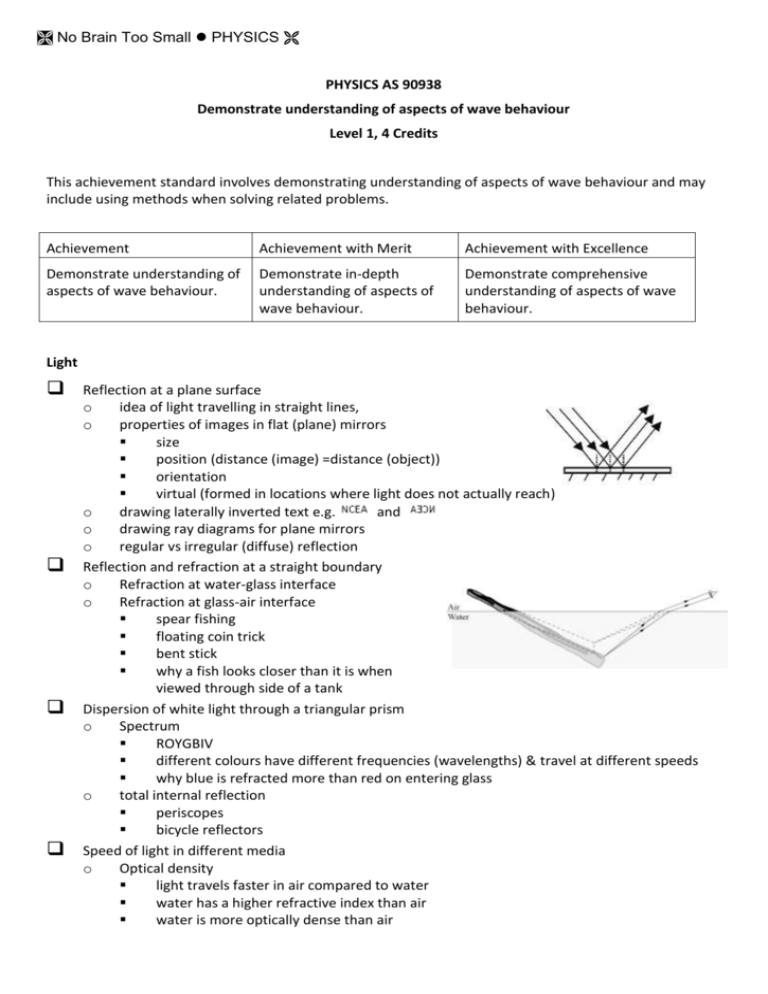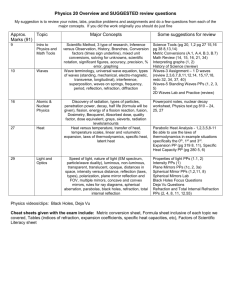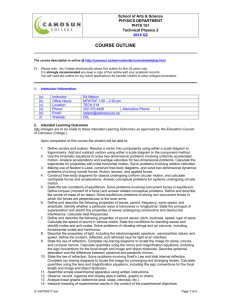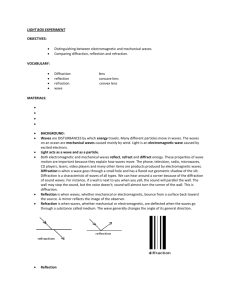waves - No Brain Too Small
advertisement

No Brain Too Small PHYSICS PHYSICS AS 90938 Demonstrate understanding of aspects of wave behaviour Level 1, 4 Credits This achievement standard involves demonstrating understanding of aspects of wave behaviour and may include using methods when solving related problems. Achievement Achievement with Merit Achievement with Excellence Demonstrate understanding of aspects of wave behaviour. Demonstrate in-depth understanding of aspects of wave behaviour. Demonstrate comprehensive understanding of aspects of wave behaviour. Light Reflection at a plane surface o idea of light travelling in straight lines, o properties of images in flat (plane) mirrors size position (distance (image) =distance (object)) orientation virtual (formed in locations where light does not actually reach) o drawing laterally inverted text e.g. and o drawing ray diagrams for plane mirrors o regular vs irregular (diffuse) reflection Reflection and refraction at a straight boundary o Refraction at water-glass interface o Refraction at glass-air interface spear fishing floating coin trick bent stick why a fish looks closer than it is when viewed through side of a tank Dispersion of white light through a triangular prism o Spectrum ROYGBIV different colours have different frequencies (wavelengths) & travel at different speeds why blue is refracted more than red on entering glass o total internal reflection periscopes bicycle reflectors Speed of light in different media o Optical density light travels faster in air compared to water water has a higher refractive index than air water is more optically dense than air No Brain Too Small PHYSICS Waves Longitudinal waves o sound waves o compressions & rarefactions o calculating the distance from the centre of a compression to the centre of the nearest rarefaction effect of increasing frequency on this distance o loudness (amplitude) & pitch (frequency) of sound waves o velocity of sound in air is constant (In the equation v = fλ, v is constant; doubling f will halve the wavelength) Transverse waves o light waves o water waves o movement of the particles at 90° to the wave direction Properties of waves o period o wavelength o frequency number of waves per second units Hz or kHz o amplitude o speed Diffraction around a barrier o water waves approaching a barrier in a sea wall effect of change of width of gap on wavelength & shape of wave pattern The relationships o v = d/t o v = f o f =1/T Calculating the period, T, from given speed and wavelength data











